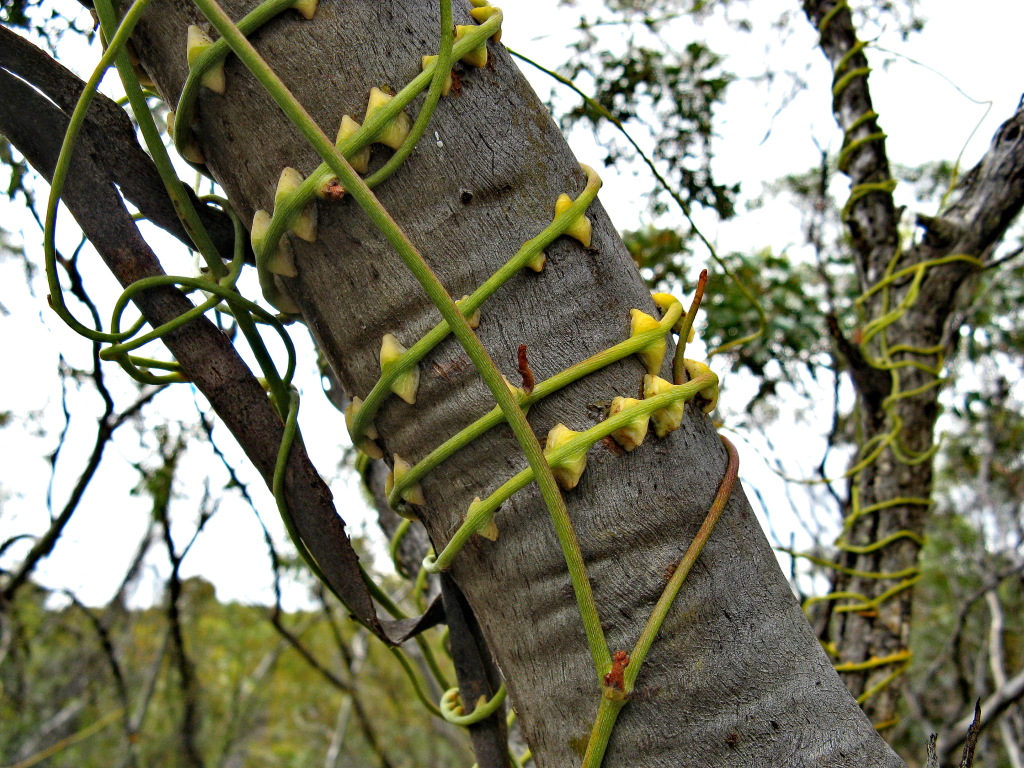Cassytha
Herbaceous twining perennials, hemiparasitic on herbs, shrubs or trees, glabrous or pubescent; stems terete, attached to hosts by small elliptical haustoria, often yellowish-green, containing chlorophyll. Leaves scale-like, stem-clasping. Inflorescence sessile or pedunculate, subtended by a scale-like bract and a pair of similar but smaller bracts. Flowers bisexual, small, sessile or shortly pedicellate, subtended by a small bract and usually by a pair of smaller bracteoles, whitish; sepals 3, scale-like, similar to bracts; petals 3, fleshy, larger than sepals; stamens usually 9, in 3 whorls; staminodes usually 3 in an innermost whorl; ovary superior. Drupe enclosed by enlarged receptacle to form a succulent outer layer (false fruit) crowned by persistent perianth and androecium or by a glandular ring; seed 1, bony.
About 17 species, mainly in tropical and subtropical regions with 1 species virtually cosmopolitan; 14 species in Australia.
Some authors place Cassytha in its own family, the Cassythaceae.
Jeanes, J.A. (1996). Lauraceae. In: Walsh, N.G.; Entwisle, T.J., Flora of Victoria Vol. 3, Dicotyledons Winteraceae to Myrtaceae, pp. 26–30. Inkata Press, Melbourne.
 Spinning
Spinning



